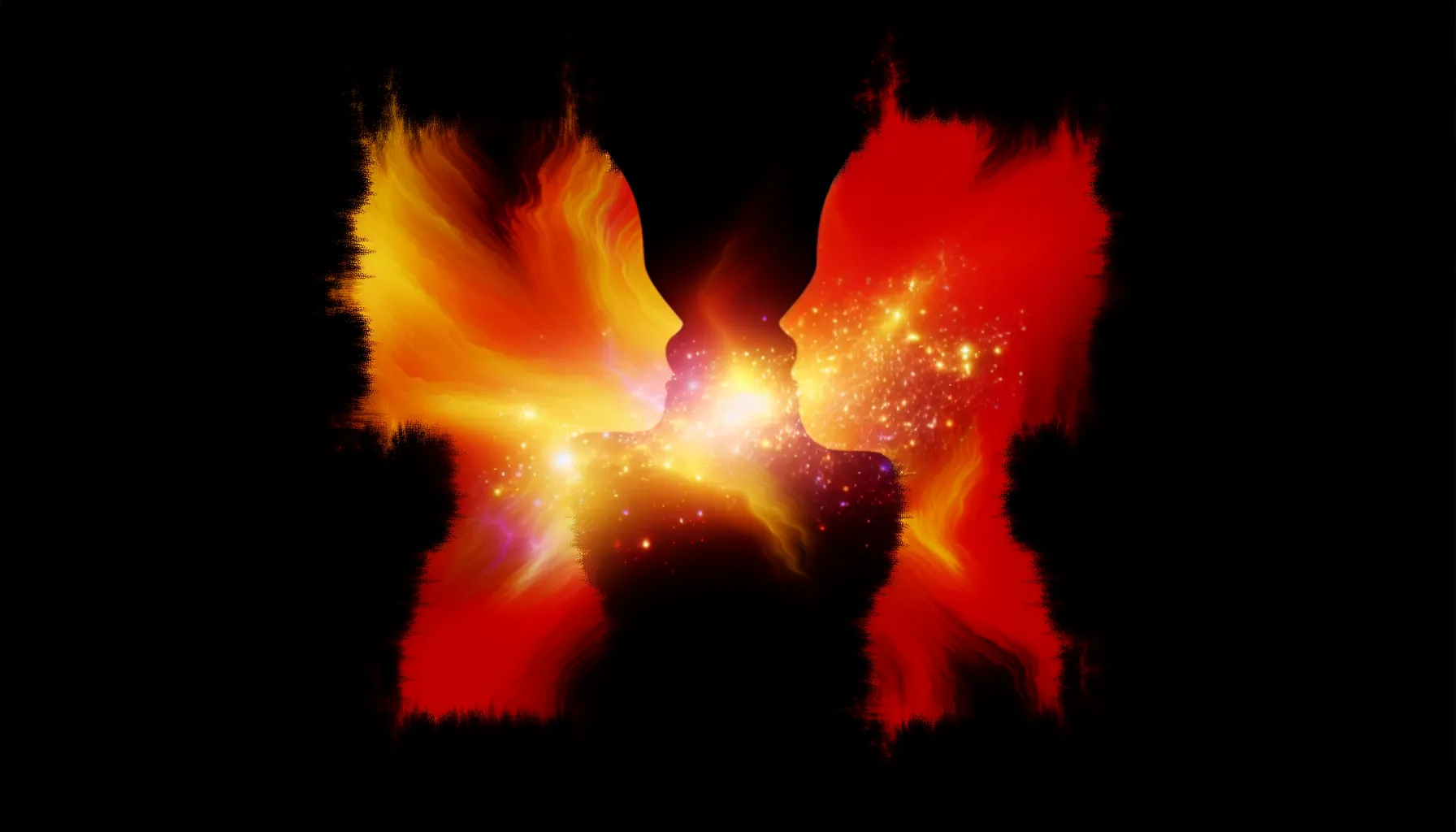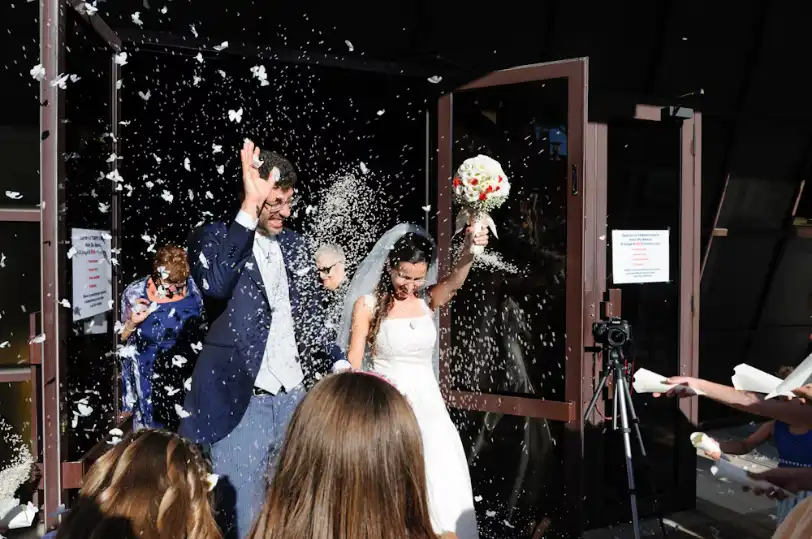
As we embark on this journey through the stages of modern dating, prepare to discover how technology, changing social norms, and new relationship models are reshaping the path to love and commitment.
Stage 1: Attraction and Initial Connection
In the digital age, the dance of attraction blends pixels with pheromones, often igniting on a smartphone screen. This first stage of dating balances digital savvy and genuine charm, where standing out in a sea of swipes becomes an art form.
Today’s singles craft first impressions in 280 characters or less, with profile pictures speaking volumes. The challenge lies in capturing imaginations amidst endless possibilities.
- Digital Icebreakers: Crafting opening messages that spark curiosity
- Profile Curation: Balancing authenticity with intrigue
- Cross-Platform Presence: Harmonizing app profiles with social media
- Emoji Etiquette: Mastering digital flirtation’s nuanced language
- Virtual Vetting: Discerning genuine connections from fleeting ones
- Video Chat Finesse: Navigating pre-meeting virtual encounters
Yet, the thrill of unexpected physical encounters still holds magic. Whether through serendipity or app-arranged rendezvous, the moment virtual possibility transforms into tangible chemistry remains unparalleled.
As people navigate this stage, they’re curating experiences aligning with their personal brand. The initial connection promises shared adventures and complementary lifestyles, transcending mere attraction.
Now that we’ve explored the initial spark of attraction, let’s dive into the exciting phase of getting to know each other in the digital age.
Stage 2: Getting to Know Each Other
As couples venture beyond the initial spark, they embark on a journey of mutual discovery that’s both exhilarating and challenging. In today’s digital landscape, getting to know each other involves a delicate dance between virtual and physical realms, crucial for assessing compatibility and building understanding.
The art of communication takes center stage. Partners navigate a spectrum of conversations, from lighthearted banter to deep discussions about values and aspirations. It’s a time of unraveling mysteries, where each revelation can either strengthen the connection or reveal potential incompatibilities.
In the tapestry of modern dating, shared experiences weave the threads of connection, while open dialogue stitches them together into a meaningful pattern. This interplay of activities and conversations forms the foundation of a potential future together.
Exploring shared interests becomes a journey of its own. Whether it’s binge-watching a series or embarking on outdoor adventures, these shared activities offer glimpses into each other’s lifestyle preferences. Simultaneously, couples grapple with balancing digital interactions and face-to-face encounters, recognizing the irreplaceable value of in-person chemistry.
This stage is marked by the gradual unveiling of vulnerabilities. As trust builds, partners begin to share their fears, hopes, and family backgrounds. It’s a delicate phase where emotional intelligence plays a pivotal role in fostering a safe space for authenticity, setting the stage for deeper intimacy.
As we move beyond surface-level interactions, the next stage brings us to the heart of relationship building: developing intimacy and vulnerability.
Stage 3: Developing Intimacy and Vulnerability
As dating progresses, the dance of vulnerability transforms surface interactions into deeper connections. This pivotal shift sees partners gradually revealing their true selves, balancing shared feelings with boundaries in our hyper-connected world.
Building trust becomes important as couples navigate this terrain. Each person’s experience is different, influenced by past romantic encounters and comfort levels. Some dive headfirst into vulnerability, while others tread carefully, questioning how much to reveal about their future aspirations.
| Trust-Building Strategies | Vulnerability Challenges |
|---|---|
| Open communication | Fear of judgment |
| Consistent actions | Digital privacy concerns |
| Respecting boundaries | Past relationship baggage |
| Shared experiences | Emotional risk-taking |
The honeymoon phase often gives way to deeper emotional intimacy, where partners grapple with tough questions about compatibility and long-term potential. It’s a time of introspection, where each individual must decide how much they’re willing to invest emotionally.
As intimacy develops, couples may find themselves at a crossroads, needing to define whether they’re ready for an exclusive partnership or prefer to keep things casual. This stage requires work, as partners learn to be comfortable with vulnerability while building a healthy foundation for potential engagement or marriage.
With a clearer understanding of each other, it’s time to explore how modern couples navigate the often tricky waters of defining their relationship.
Stage 4: Defining the Relationship
In the digital age, dating enters a pivotal phase where labels become as fluid as Instagram stories. Gone are the days of simple “going steady” announcements. Today’s partners navigate a labyrinth of relationship statuses, each carrying its own digital weight.
The “talk” has evolved into a delicate dance of emoji-laden texts and late-night video calls. Couples grapple with questions that would make even Shakespeare scratch his head:
- Are we #CoupleGoals or just hanging out?
- Should we make it Facebook official or keep it Snapchat ephemeral?
- Is updating our Tinder bios to “taken” too much pressure?
- Do we need a shared Netflix account to be truly monogamous?
- How much of our love story should we share on social media?
- Is it too soon to introduce each other to our TikTok followers?
Social media adds a new layer of complexity. A simple status change can spark more drama than a season finale. Couples must decide how much to share online, balancing privacy with the expectation of digital PDA.
This stage transcends becoming boyfriend and girlfriend. It’s about crafting a compatible vision of the future. Are both parties aligned on career goals, travel plans, or even wedding preferences? These conversations, once reserved for candlelit dinners, now often unfold over FaceTime as partners meet the challenges of long-distance romance or busy schedules.
As we progress through the stages of dating, our next stop is perhaps the most crucial: building a strong, lasting partnership in the face of modern challenges.
Stage 5: Building a Partnership
As two lives intertwine, building a robust partnership takes center stage. This phase transcends initial excitement, demanding a delicate balance between shared aspirations and individual growth. It’s a dance of compromise and celebration, each step strengthening the foundation of a potential lifelong alliance.
Crafting shared goals becomes paramount, from planning dream vacations to deciding career trajectories. These joint ventures bind distinct lives into a cohesive unit. Yet, the true test lies in navigating inevitable storms.
In the tapestry of partnership, conflict isn’t a tear but a thread of opportunity, weaving resilience into the fabric of your bond. Studies show that couples who approach conflicts as growth opportunities report 30% higher relationship satisfaction.
Mastering conflict resolution emerges as a critical skill. It’s about transforming disagreements into growth opportunities, feeling heard while actively listening. Partners who view conflicts as chances to deepen understanding often find their connection strengthened.
Amidst this fusion, maintaining individuality is crucial. Nurturing personal passions and friendships ensures the partnership enhances rather than eclipses personal identity. This balance keeps the relationship dynamic, fostering mutual respect.
As partners navigate this stage, they learn to expect the unexpected, embracing change as a constant companion. It’s about creating a flexible framework that adapts to life’s curveballs while staying true to core values.
With a solid foundation built, let’s explore how Conscious Relationship Design can help navigate the complexities of modern dating and lead to more fulfilling partnerships.
Stage 6: Long-term Commitment
In the era of digital connections, long-term commitment has undergone a radical transformation. Today’s partners are redefining what it means to go the distance, embracing a spectrum of models that challenge traditional notions of “happily ever after.” From digital nomads maintaining love across continents to unconventional arrangements navigating shared futures, the landscape of lasting connections is as diverse as it is dynamic.
Modern views on marriage have evolved, with many millennials opting for “relationship dating” – a continuous process of choosing each other daily, sans legal binding. This shift reflects a desire for authenticity and flexibility in enduring partnerships. Alternative models gaining traction include:
| Model | Key Features |
|---|---|
| Living Apart Together (LAT) | Committed but separate residences |
| Renewable Contracts | Time-bound agreements with option to renew |
| Fluid Bonding | Intimacy-based commitments beyond exclusivity |
| Digital Unions | Tech-mediated long-distance partnerships |
| Conscious Uncoupling | Mindful separation with mutual respect |
Strategies for longevity in the digital age focus on intentional connection. Partners leverage technology to deepen intimacy, using apps for shared goal-setting and virtual date nights. The decision to commit long-term now often involves aligning digital personas and discussing social media boundaries alongside traditional considerations.
Ultimately, successful long-term commitments in the modern era hinge on adaptability, open dialogue, and a willingness to co-create unique narratives that resonate with both individuals’ evolving needs and aspirations.
Now that we’ve explored the stages of dating and the concept of Conscious Relationship Design, let’s address some common questions about navigating modern relationships.
Navigating the Stages with Conscious Relationship Design
In the ever-evolving landscape of modern dating, Conscious Relationship Design (CRD) emerges as a revolutionary approach to navigating the intricate stages of connection. This innovative framework empowers individuals to craft intentional partnerships that align with their deepest values and aspirations.
CRD encourages a proactive stance in shaping romantic journeys, offering a toolkit for mindful progression through each phase. By applying CRD principles, daters can:
- Cultivate self-awareness to identify core needs and boundaries
- Foster open dialogue about relationship expectations from day one
- Implement regular “State of the Union” check-ins to assess mutual growth
- Design personalized rituals that reinforce connection amidst digital distractions
- Embrace flexibility in redefining traditional relationship milestones
- Utilize technology to enhance intimacy through shared goal-tracking apps
- Practice active listening techniques to deepen understanding and empathy
CRD advocates for a holistic approach, integrating emotional intelligence, communication skills, and shared goal-setting. This method transforms potential pitfalls into opportunities for deeper understanding and alignment.
By viewing each stage as a co-created experience, partners can navigate challenges with grace and purpose. CRD’s emphasis on adaptability proves particularly valuable in today’s fast-paced digital age, where dating dynamics can shift rapidly.
Ultimately, Conscious Relationship Design offers a roadmap for those seeking to build meaningful connections that stand the test of time, technology, and changing social norms. It empowers each partner to take an active role in crafting a unique, fulfilling journey together.
Frequently Asked Questions
How long does each stage of dating typically last?
The duration of dating stages varies widely, defying universal timelines. Some breeze through attraction in days, others savor it for months. Getting-to-know-you phases can span weeks or years. Each journey’s rhythm is unique, shaped by chemistry, circumstances, and personal preferences.
Is it possible to skip stages in the dating process?
Skipping dating stages, while possible, often proves unwise. Accelerated connections may bypass crucial trust-building phases, potentially compromising long-term compatibility. Online platforms have reshaped romance’s progression, altering traditional timelines and interactions. Let’s explore how digital dating has transformed the landscape of modern relationships.
How has online dating affected the traditional stages of dating?
Online dating has transformed romantic connections, compressing courtship timelines. Digital platforms blend attraction and communication stages seamlessly, accelerating intimacy development. Virtual interactions introduce challenges in authenticity assessment and digital etiquette. This shift demands a reevaluation of traditional dating boundaries.
What are some signs that you’re ready to move to the next stage in dating?
Feeling at ease sharing vulnerabilities, envisioning a shared future, and prioritizing each other signal readiness to progress in dating. Mutual respect, aligned values, and effortless communication indicate a deepening connection. Trust your intuition; when intertwining lives feels natural, you’re likely prepared for the next step.
How do you know if you’re stuck in a particular stage of dating?
Relationship stagnation often signals being stuck in a dating stage. Watch for repetitive conversations, lack of emotional growth, or hesitation to deepen intimacy. If you’re constantly revisiting past issues, you might be trapped. Trust your intuition; it often indicates when it’s time to evolve or reassess.
Can you be in different stages with different people simultaneously?
Juggling multiple dating scenarios is increasingly common, demanding exceptional emotional intelligence and clear communication. Each connection evolves uniquely, reflecting individual dynamics. This approach requires ethical consideration and awareness of potential emotional impacts for all involved.
How do cultural differences affect the stages of dating?
Cultural nuances profoundly shape the dating landscape, from initial attraction to long-term bonds. Collectivist societies prioritize family approval, while individualistic cultures emphasize personal chemistry. Courtship rituals and intimacy boundaries vary dramatically, demanding heightened cultural intelligence for cross-cultural romances.
What role does social media play in modern dating stages?
Social media reshapes modern dating, blending attraction and connection stages. It offers glimpses into potential partners’ lives, accelerating intimacy yet challenging authenticity. This digital landscape demands new navigation skills, as constant connectivity both enriches and complicates romantic journeys in the digital age.
How can Conscious Relationship Design help in navigating the stages of dating?
Conscious Relationship Design empowers individuals to navigate dating with intention. It fosters self-awareness, open communication, and shared goal-setting, transforming challenges into growth. This approach redefines milestones, leverages technology for intimacy, and emphasizes active listening, creating a foundation for meaningful connections in the digital age.
Are the stages of dating different for LGBTQ+ relationships?
LGBTQ+ dating often involves unique challenges. Identity exploration and coming out precede attraction. Community connections are crucial for meeting partners. Societal acceptance adds complexity. Milestones may be redefined, emphasizing chosen family. Age impacts romantic progressions differently across life stages.











